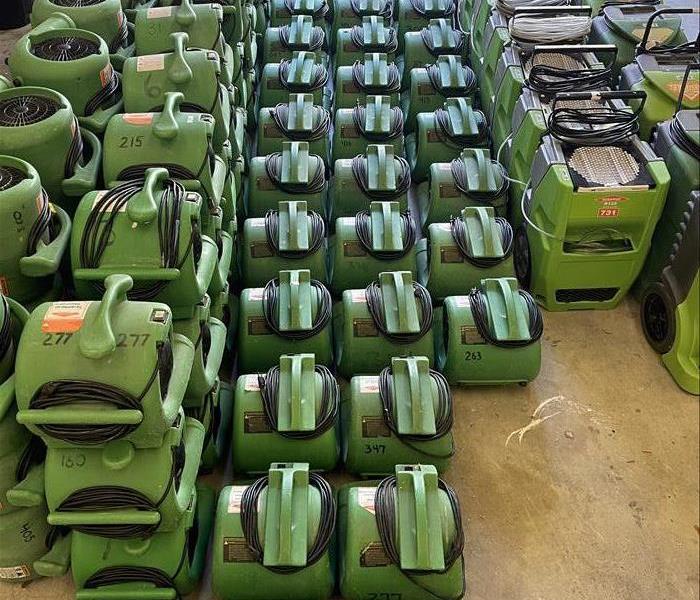DIY Flood Cleanup Mistakes to Avoid
2/7/2023 (Permalink)
 SERVPRO has the drying equipment to dry out your structure properly, helping to bring you back to preloss condition.
SERVPRO has the drying equipment to dry out your structure properly, helping to bring you back to preloss condition.
Flooding is a very serious threat to the integrity of your home. If not professionally treated, water damage can lead to harmful mold growth or structural issues. If you’re determined to attempt a flood damage restoration project on your own, here are some common mistakes to avoid.
Waiting Too Long
Flood damage gets worse the longer it lingers. Serious measures have to be taken as soon as possible.
Poor Assessment
Flood restoration professionals have special training and experience in looking for water damage and assessing the extent of it. Moisture is great at hiding under floorboards or linoleum, or within walls and baseboards. The inspection must be extensive.
Using Improper or Insufficient Supplies or Equipment
Water damage professionals have special flood damage supplies and equipment that make it much easier to remove moisture. Towels, a box fan, and a vacuum aren’t going to cut it. Check if your local hardware store has some of these items available to rent, as they’re expensive to buy.
- Heavy-duty Dehumidifier - to pull the moisture out of the air surfaces
- Heavy-duty Fan - there are special fans designed to dry out rooms and surfaces
- Air Scrubber - these appliances suck in air and expel it through a HEPA filter to remove impurities
- Extraction Tool - Basically a giant high-powered wet vac that can suck up air from surfaces and run it into a storage tank or drain. An industrial model can remove a lot of water in a short time. Also known as a flood pumper.
- Moisture Probe - uses a coiled cable to find moisture where it’s hard to detect.
- Floor and Wall Drying Systems - There are a variety of professional quality drying systems available to pull moisture from walls and floors.
Overlooking Hazards
Floods can create a number of dangerous conditions that professionals know to look out for. They include:
- Gas Leaks - Floods can damage gas lines in ways that can poison the air or cause an explosion. Turn off all gas connections, and smell for gas.
- Insecure Flooring - Water damage can weaken floor supports and soften floorboards, making them less stable. Tread lightly and carefully. If your foot falls through the floor you can get seriously injured.
- Electrical Hazards - Flood damage can affect your wiring and circuits in unpredictable and dangerous ways. Shut off your home’s power to avoid the risk of shock, and look for downed power lines.
- Sewage and Bacteria - Flooding can cause your plumbing to back up, which can make for very unsanitary conditions. Don’t ignore foul smells.
- Animals - Flooding can be hard on wildlife. Look for rats, possums, ants, and other creatures.
If your Northeast Florida home or business has suffered flood damage, call SERVPRO of Jacksonville Beach/Ponte Vedra, at (904) 246-6118. Our highly trained restoration technicians have the experience and equipment to restore your Atlantic Beach, Neptune Beach, Jacksonville Beach, or Ponte Vedra building and get everything back to like-new condition. A trusted leader in the industry, we’ve served our community for more than 40 years.





 24/7 Emergency Service
24/7 Emergency Service